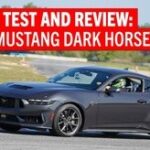The 12v Vr6 engine, a unique powerplant with a distinct narrow-angle V6 configuration (15 degrees rather than the typical 60 or 90), was initially conceived as a 2.8-liter TDI diesel engine. However, Volkswagen ultimately shifted gears, transforming it into a gasoline engine. The robust internals of the VR6, designed to withstand approximately 450 lb-ft of torque, contribute to its renowned durability.
The Durability and Longevity of the 12v VR6
Owners of turbocharged (VR6T) and supercharged VR6s often report impressive mileage, ranging from 75,000 to 150,000 miles, before requiring major repairs. While naturally aspirated (N/A) VR6 engines offer enjoyable performance, they don’t achieve the same power levels as some high-revving four-cylinder engines like the Honda K20A2 or Nissan Z1. Even with modifications like increasing displacement to 3.1 liters and other N/A tuning, the maximum power output achieved on a 12v VR6 is around 230 horsepower and 215 lb-ft of torque.
Turbocharging the 12v VR6: Potential and Challenges
The potential of the VR6 truly shines when turbocharged. The engine’s inherent strength allows for significant power gains with forced induction. For power outputs below 550 horsepower, internal modifications are often unnecessary, highlighting the engine’s robust design. However, successful turbocharging relies heavily on proper engine management. Standalone systems like DTApro8 and 034 tuning are essential but can be expensive and require specialized tuning expertise, which can be challenging to find depending on location. Engine management issues are often the primary culprit when problems arise with turbocharged VR6s.
Comparing the VR6 to Other Inline Engines
The 12v VR6, with its unique narrow-angle V configuration, shares some characteristics with inline-six engines, particularly in its ability to handle boost. Similar to legendary engines like the Toyota 2JZGTE and Nissan RB26DETT, the VR6 benefits from its configuration when under boost. Inline engines, whether four or six cylinders, often excel in forced induction applications. The Mitsubishi 4G63 and the Dodge SRT-4’s engine exemplify the power potential of inline-four engines. Both naturally aspirated and boosted engines offer unique performance characteristics and tuning potential.
Conclusion: The Enduring Appeal of the 12v VR6
The 12v VR6 engine, with its unique design and robust construction, remains a popular choice for enthusiasts. While not as inherently powerful in naturally aspirated form as some four-cylinder counterparts, its strength and potential for significant power gains through turbocharging make it a compelling option. The key to unlocking the 12v VR6’s performance lies in proper engine management and tuning. Its unique blend of durability, potential, and character ensures its continued appeal in the automotive world.


